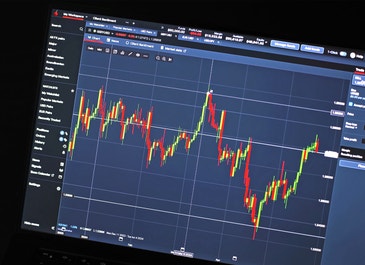How the Forex Market Operates and What Traders Should Know

The Forex market, referred to as Forex or FX, is a dynamic setting where currencies are exchanged globally. To succeed in this fast-paced market, traders must understand how to acknowledge traits and use powerful strategies. Uniformity in Forex trading is not just about creating frequent gains but also about handling chance and adapting to changing industry conditions.

Understanding Forex Traits
A tendency in the Forex market refers to the basic direction by which a currency set is going around a certain period. Developments can be upward (bullish), downhill (bearish), or sideways (ranging). Knowing these traits is important for creating informed trading decisions.
Uptrends arise when rates consistently make higher peaks and larger lows. Downtrends are identified by lower levels and decrease lows. In a sideways market, cost movements in just a range without a apparent direction, and this usually occurs throughout periods of industry uncertainty.
Traders use trendlines, going averages, and specialized indications to help identify and validate trends. Knowledge the strength and path of a tendency allows traders to align their strategies with the market's momentum.
Key Forex Trading Techniques
Several trading strategies can help traders obtain regular results in the Forex market. The success of each technique depends upon the trader's experience, time commitment, and chance tolerance.
Trend-following technique
This approach involves entering trades in the path of the prevailing trend. Traders applying this technique frequently depend on resources like moving averages, MACD, and ADX to confirm tendency strength. The thought is to ride the tendency for as long as it remains unchanged, leaving when signals of change appear.
Breakout technique
Breakout trading is targeted on entering a position when the value breaks out of a defined selection or pattern. Traders look for essential support and resistance levels and position trades when price activity breaches these levels with powerful volume. This technique works well in markets preparing for a significant move.
Range trading strategy
In this method, traders make the most of cost bouncing between recognized help and resistance levels. It's most reliable in sideways areas where there is number apparent trend. Oscillators like RSI or Stochastic indicators are often used to recognize overbought or oversold conditions within the range.
Scalping strategy
Scalping requires making numerous little trades throughout the day to make the most of tiny price movements. This technique requires fast decision-making, high concentration, and low exchange costs. Scalping can succeed for experienced traders with use of quickly performance platforms.
Risk Management for Uniformity
No technique can guarantee gains without correct chance management. Traders should determine their risk patience and collection stop-loss and take-profit levels for each trade. A standard principle is not to chance more than one to two % of trading capital on a single position.

Maintaining a trading diary helps track performance, identify habits, and produce necessary changes to strategies. Psychological get a grip on and discipline are equally important in avoiding impulsive conclusions that can result in losses.
